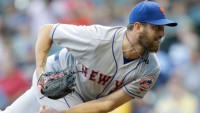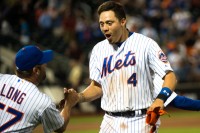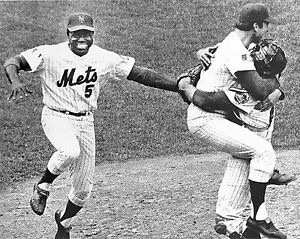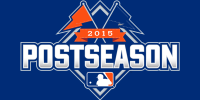
After a heartbreaking loss in Game 7 of the 2006 NLCS, the Mets entered the 2007 season as favorites to at least win the BL East. Jimmy Rollins had other ideas proclaiming the Phillies “the team to beat in the NL East – finally.”
Rollins backed it up with a historic Mets collapse and his winning the NL MVP. In 2007, Rollins hit .346/.391/.667 against the Mets. As we all know, the Mets would collapse again in 2008. These memories have haunted Mets fans ever since.
The Mets now face him and his former and new teammate, noted Mets killer, Chase Utley, in the NLDS. Once again, Rollins and Utley stand in the Mets way. I know Mets fans are more upbeat since clinching a playoff berth, and they are expecting an NLDS victory. Losing to Rollins and Utley now would inflict more harm on Mets fans than those two already have.
If the Mets win, they will have exercised those two demons from 2007 & 2008. With Adam Wainwright possibly returning to the Cardinals bullpen, they might be able to exorcise another demon in the NLCS.
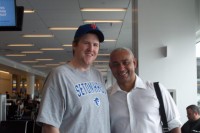
Look, this is Sandy Alderson’s team. He decided to keep the players he kept and trade the players he traded. He pulled off the trades and signed the free agents. However, he was able to do a lot of what he did because he was left with good players after Omar Minaya was terminated.
Here are the players in the 40 man roster who have a link to Omar Minaya (asterisked players are players obtained with players combined by Minaya and Alderson):
Jerry Blevins – obtained for 2010 draft pick Matt den Dekker.
Eric Campbell – 2008 draft pick.
Darrell Ceciliani – 2009 draft pick.
Travis d’Arnaud – part of the R.A. Dickey trade. Dickey was a free agent signing. Josh Thole was a 2005 draft pick. Mike Nickeas was initially obtained by trade in 2006.
Jacob deGrom – 2010 draft pick.
Lucas Duda – 2007 draft pick.
Jeurys Familia – 2007 amateur free agent signing.
Wilmer Flores – 2007 amateur free agent signing.
Erik Goeddel – 2010 draft pick.
Matt Harvey – 2010 draft pick
Dilson Herrera* – part of Marlon Byrd/John Buck trade. Buck was part of the Dickey trade (see d’Arnaud).
Juan Lagares – 2006 amateur free agent signing.
Steven Matz – 2009 draft pick.
Jenrry Mejia – 2007 amateur free agent signing.
Akeel Morris -2010 draft pick.
Daniel Murphy – 2006 draft pick.
Bobby Parnell – 2005 draft pick.
Addison Reed* – obtained in exchange for Matt Koch and Miller Diaz (signed by Mets in 2009).
Hansel Robles – 2008 amateur free agent.
Noah Syndergaard – part of Dickey trade (see d’Arnaud).
Ruben Tejada – 2006 amateur free agent.
Again, these players are in the roster because Alderson kept them. The decision of who to keep and trade is important. That is what makes them Alderson’s players and team. Additionally, while It was Alderson that hired Terry Collins, it was Minaya who brought him into the Mets organization.
However, it is important to truly acknowledge Minaya’s role, especially when he has been unfairlyand wrongly marginalized.
You see I was on the same Jet Blue flight as Omar Minaya. The photo with this post was Minaya and me in the terminal before the flight. He was accessible to Mets fans who wanted to shake his hand and take a picture. No one, and I mean no one, had the “courage” to mock him on the flight.
Additionally, this should dispel the notion that Minaya left the Mets with a depleted farm system. On the contrary, he built a strong farm system that helped make up this team. Minaya had his faults, and he probably deserved to be fired when he was. That doesn’t mean we should ignore his work.
It doesn’t mean that we shouldn’t extend our gratitude to him for what he left behind.

There are two choices for 4. The first is Ron Swoboda, who was a key contributor to the 1969 Mets World Series victory:
However, my choice for Magic Man Number 4 will be Lenny Dykstra:
I chose Dykstra mostly because I got to see him play. I chose him because he was amazing in the 1986 postseason.
In the NLCS, he hit .304/.360/.565. He hit a walk off two run homerun in Game 3 of the NLCS to give the Mets a 6-5 win. He got the Game 6 ninth inning rally started with a leadoff triple. Everyone who watched this NLCS discuss the importance of winning in six with NLCS MVP Mike Scott scheduled to pitch Game 7.
In the World Series, Dykstra hit .296/.345/.519. Strangely enough, Dykstra was so big in big games that this was his worst ever postseason series. Dykstra lead off Game 3 in Boston with a homerun. This was important as the Mets came to Boston after losing the first two at Shea.
When Dykstra did all of this, he was only 23 years old. It shows that it’s not an issue of experience come October. Rather, it’s an issue of who has ice water running through their veins. This is important to keep in mind because the Mets run largely rests with their young pitching.
The young pitching has met every challenge thus far. As Dykstra shows us, they will meet the challenges they face en route to the World Series.
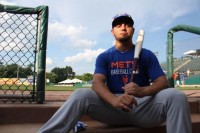
Sounds absurd doesn’t it? Michael Conforto has exceeded everyone’s expectations this year. He’s been a huge part of the team. However, he’s been used strictly as a platoon player. It’s probably because he’s hitting .167/.231/.167 against lefties this year, albeit in only 13 plate appearances.
Normally, this wouldn’t be an issue, but the Dodgers will be starting three lefties in the NLDS. If Clayton Kershaw starts Games 1 & 5, that means Conforto won’t start in four of the five NLDS games. I don’t think the Mets will prep Conforto for the lefties either. On clinch day, the Reds had a lefty on the mound, and Conforto was the only lefty who wasn’t in the lineup.
The question that arises is what use can Conforto be as a bench player? Even with his surprising defensive ability, he’s not a late inning defensive replacement; that’s Juan Lagares‘ job. That leaves him for pinch hitting and double switch and pinch hitting duties.
You could argue that role may be better left to Kirk Nieuwenhuis, who can play CF, or Eric Campbell, who’s right handed. Campbell is also versatile, which could be useful after the Juan Uribe injury. Both Nieuwenhuis and Campbell are also more accustomed to being bench players that sit for long stretches at a time.
However, this neglects Conforto’s limited work as a bench player. Conforto has hit .333/.429/.500 in seven plate appearances as a pinch hitter. Also, he’s just a better player than Nieuwenhuis and Campbell. When you’re selecting your playoff roster, you want your best players on the roster, even if they’re not going to play as much as they should.
However, if he’s left off the roster I’m not going to take issue. Anytime a player is potentially not going to play four out of five games, there should be a discussion whether there’s a player available who can better serve the team.
I just don’t think there is a better player than Michael Conforto.
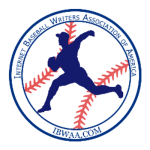
I think it is helpful to use the Cy Young guidelines when selecting each leagues top relievers. There are some other things I will consider.
I will consider both set-up men and closers. However, I will give slightly more weight to closers. We have seen time and time again there are players that have been terrific set-up men become shaky closers. Additionally, there should be weight to innings pitched. The more innings you play, the more important you are to a team.
Overall, my hope is to choose the best overall relievers whether or not they are closers.
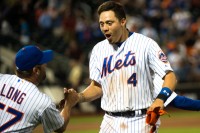
It’s an off-day, but that doesn’t mean you can’t work on your Wilmer Flores cheers. This one is useful because at a game you might have something in your hand at a game:

In 1969, the Mets had a platoon at third base with the rookie left handed batter Wayne Garrett and our Magic Man Number 5 Ed Charles:
The Glider was a good major league player for the Kansas City Athletics and the New York Mets. His major league debut was the same year as the Mets first ever season. His last ever game was Game 5 of the 1969 World Series. He went out a winner.
His last year reminds me of the current Michael Conforto–Michael Cuddyer situation. The older player takes a step back to let the better, younger player shine. It helped lead the Mets to a World Series in 1969. Hopefully, the Mets will win it all again this year.
Lets Go Mets!

Now, I’m on the record as not thinking Homefield is an advantage to the Mets. Overall, I think the Mets may be better served by stating the NLDS in Los Angeles. However, I am excited to see the Mets go for it.
Also, I have to admit I am excited at the idea of seeing Citi Field rocking for its first playoff game. Also, I had a lot of fun doing the Magic Number countdown for the divisional title. Unlike the last time, I am not focusing on the bad players on bad years. Mets fans are celebrating.
Instead, I’m focusing on Mets who have won the World Series because that’s the goal. I can’t truly focus on players I’ve seen because I wasn’t born in 1969, and I was too young to completely remember 1986.
Normally, the magic number is calculated by determining the point in which a team obtains its goal outright. Because the Mets win the season series against the Dodgers, the Mets only need to have the same exact record as the Dodgers.
Homefield Magic Number: 5

